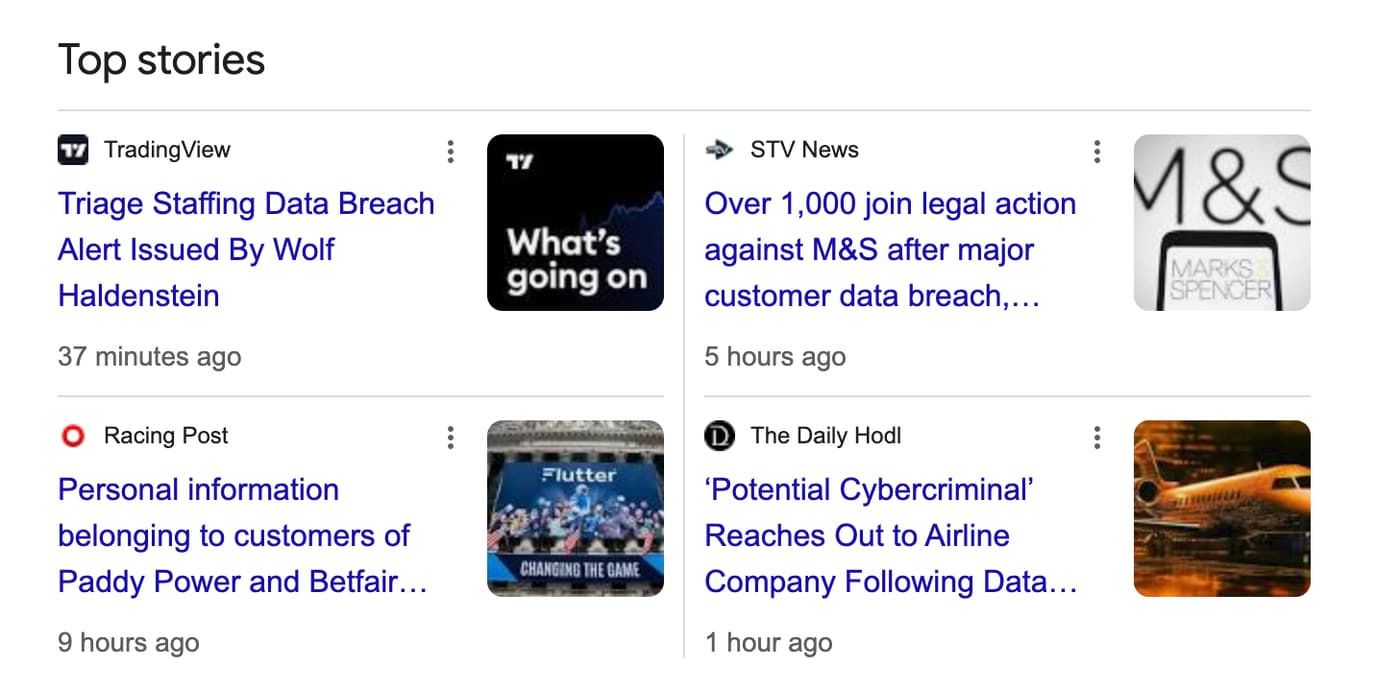One way to understand and mitigate common security risks is by referring to the OWASP Top Ten. This is a comprehensive list of the most critical security risks to web applications, curated by the Open Web Application Security Project (OWASP).

Understanding the OWASP Top Ten: a guide to web application security
In today’s digital age, where practically every business has an online presence, ensuring the security of web applications is more critical than ever. One way to understand and mitigate common security risks is by referring to the OWASP Top Ten. This is a comprehensive list of the most critical security risks to web applications, curated by the Open Web Application Security Project (OWASP).
We wanted to explore its importance and set out how it can help businesses and developers safeguard their applications against security vulnerabilities. Security is a topic that often gets overlooked or only prioritised once it is too late, which can be costly and have long-term implications for an organisation.
What is the OWASP Top Ten?
The OWASP Top Ten is a globally recognised and frequently updated list of the ten most common and severe security risks for web applications. It serves as a resource for developers, security professionals and organisations aiming to build secure applications or assess the security of existing ones.
Each risk on the list is accompanied by a detailed explanation, examples, and recommendations for mitigating these risks. By focusing on these critical areas, developers can significantly reduce the likelihood of their applications being compromised.
Why is the OWASP Top Ten important?
Global awareness: the OWASP Top Ten has become the industry standard for identifying and addressing web application security risks. Its recognition helps companies prioritise security measures that address the most widespread and dangerous vulnerabilities.
Preventing data breaches: many data breaches and cyberattacks stem from vulnerabilities listed in the OWASP Top Ten. Addressing these risks, companies can prevent unauthorised access to sensitive data, ensuring customer trust and compliance with privacy regulations.
Building secure applications from the start: for developers, the OWASP Top Ten provides clear guidelines on which security aspects to focus on when building applications. Incorporating these best practices during development, security is embedded into the foundation of the application rather than added as an afterthought.
The OWASP Top Ten risks
Here’s an overview of the current OWASP Top Ten risks:
Broken access control
When access control mechanisms fail, unauthorised users may gain access to restricted resources. Role-based access control (RBAC) means that users can only access data and functionalities they’re authorised to use.
Cryptographic failures
Storing or transmitting sensitive data, like credit card numbers or personal information, without proper encryption can expose it to attackers. Ensuring that sensitive data is always encrypted both in transit and at rest helps to mitigate this risk.
Injection
Injection attacks, such as SQL injection, occur when untrusted data is sent to an interpreter as part of a command or query. This can lead to unauthorised access or data corruption. To prevent injection attacks, validate and sanitise all user inputs.
Insecure design
An insecure design cannot be fixed by a perfect implementation because the required security controls were never created to defend against specific attacks. Threat modeling or business risk profiling as well as secure design patterns, principles and reference architectures can prevent this.
Security misconfiguration
Without a concerted, repeatable application security configuration process, systems are at a higher risk. Incorrect configurations or incomplete settings can expose applications to various vulnerabilities. To mitigate this risk you should regularly review and harden security settings, removing unnecessary features and services and applying the principle of least privilege.
Vulnerable and outdated components
Using outdated or vulnerable libraries and components can open your application to exploitation. Regularly updating software dependencies and using tools to monitor and address known vulnerabilities in third-party components can remove these exploits.
Identification and authentication failures
If an attacker can bypass authentication mechanisms, they can gain unauthorised access to systems. Authentication systems should use multi-factor authentication (MFA), strong password policies and regular session timeouts.
Software and data integrity failures
These relate to code and infrastructure that does not protect against integrity violations. Examples of this may include a reliance on plugins, libraries, or modules from untrusted sources, repositories and content delivery networks (CDNs).
Use digital signatures to verify software authenticity, ensure libraries come from trusted sources and use tools like OWASP Dependency Check to identify vulnerabilities. You should also implement a review process for code changes, maintain strong access control in your CI/CD pipeline, and avoid sending unsigned or unencrypted serialized data to untrusted clients without integrity checks.
Security logging and monitoring failures
Without proper logging and monitoring, attacks may go undetected until significant damage is done. Implement robust logging mechanisms and continuously monitor systems for suspicious activity. Establish an incident response plan for quick action.
Server-side request forgery
SSRF flaws occur whenever a web application is fetching a remote resource without validating the user-supplied URL. To respond to this threat you can segment network access, enforce strict firewall policies and log network flows. At the application level, you should sanitise inputs, use allow lists, avoid raw responses and prevent HTTP redirections. Avoid relying on deny lists and control local traffic. For high-security frontends, use network encryption like VPNs.
How to use the OWASP Top Ten
The OWASP Top Ten is not just a theoretical list but a practical guide to improving web application security. Here’s how you can leverage it:
- Develop securely: when building applications, make the OWASP Top Ten part of your development process.
- Conduct regular code reviews, implement security best practices, and prioritise the most critical risks.
- Conduct security audits: perform regular security audits using the OWASP Top Ten as a benchmark. These audits should identify vulnerabilities in your application and provide actionable recommendations to address them.
- Train your team: your developers (in-house or at your agency), testers and security professionals should be trained to be familiar with the OWASP Top Ten. This knowledge will mean they can identify and mitigate security risks in their everyday tasks.
In summary
The OWASP Top Ten is a valuable resource for improving the security of web applications. By understanding and addressing the most common and critical security risks, developers and organisations can significantly reduce the likelihood of attacks and data breaches.
Implementing the OWASP Top Ten’s recommendations will not only protect sensitive data but also enhance user trust and compliance with privacy regulations.
Staying updated with the latest OWASP Top Ten releases is key to maintaining a proactive approach to web security.
The release of the ‘OWASP Top 10:2025’ is expected in the first half of 2025 and we will update this post accordingly. For more information on the OWASP Top Ten, visit OWASP’s official website.





